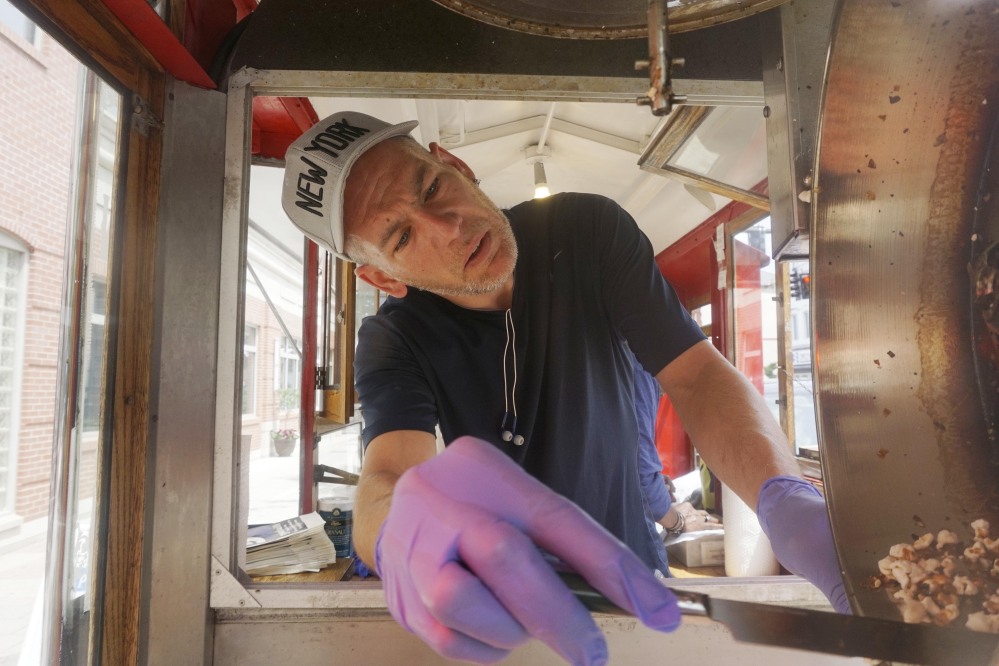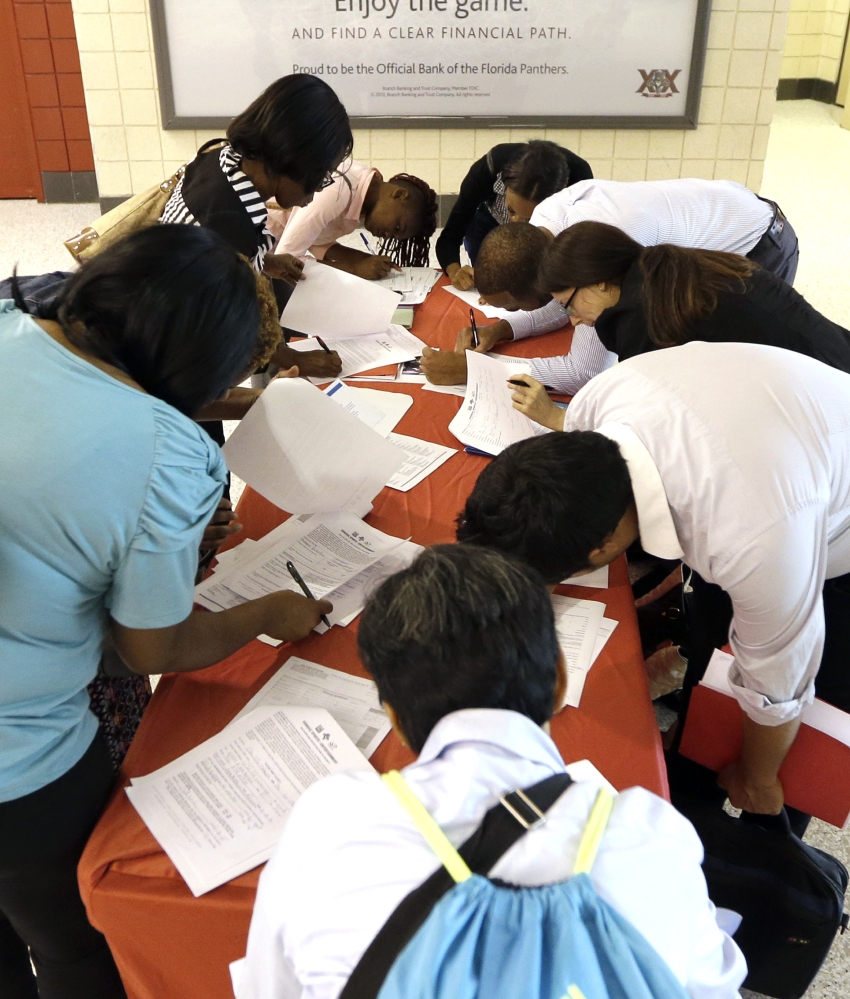WASHINGTON — Even after another month of strong hiring in June and a sinking unemployment rate, the U.S. job market just isn’t what it used to be.
Pay is sluggish. Many part-timers can’t find full-time work. And a diminished share of Americans either have a job or are looking for one.
Yet in the face of global and demographic shifts, this may be what a nearly healthy U.S. job market now looks like.
An aging population is sending an outsize proportion of Americans into retirement. Many younger adults, bruised by the Great Recession, are postponing work to remain in school to try to become more marketable. Global competition and the increasing automation of many jobs are holding down pay.
Many economists think these trends will persist for years despite steady job growth. It helps explain why the Federal Reserve is widely expected to start raising interest rates from record lows later this year even though many job measures remain far below their pre-recession peaks.
“The Fed may recognize that this is a new labor-market normal, and it will begin to normalize monetary policy,” said Patrick O’Keefe, an economist at accounting and consulting firm CohnReznick.
Thursday’s monthly jobs report from the government showed that employers added a solid 223,000 jobs in June and that the unemployment rate fell to 5.3 percent from 5.5 percent in May. Even so, the generally improving job market still bears traits that have long been regarded as weaknesses. Among them:
• A shrunken labor force.
The unemployment rate didn’t fall in June because more people were hired. The rate fell solely because the number of people who had become dispirited and stopped looking for work far exceeded the number who found jobs.
The percentage of Americans in the workforce – defined as those who either have a job or are actively seeking one – dropped to 62.6 percent, a 38-year low, from 62.9 percent. (The figure was 66 percent when the recession began in 2007.)
Fewer job holders typically mean weaker growth for the economy. The growth of the labor force slowed to just 0.3 percent in 2014, compared with 1.1 percent in 2007.
“It is highly unlikely that we are going to see our (workforce) participation rate move anywhere near where it was in 2007,” O’Keefe says.
This marks a striking reversal. The share of Americans in the workforce had been steadily climbing through early 2000, and a big reason was that more women began working. But that influx plateaued in the late 1990s and has drifted downward since.
• The retirement of the vast baby boom generation.
The aging population is restraining the growth of the workforce. The pace of retirements accelerated in 2008, when the oldest boomers turned 62, when workers can start claiming some Social Security benefits. Economists estimate that retirements account for about half the decline in the share of Americans in the workforce since 2000.
From that perspective, the nation as a whole is beginning to resemble retirement havens such as Florida. Just 59.3 percent of Floridians are in the workforce.
• Younger workers are starting their careers later.
Employers are demanding college degrees and even postgraduate degrees for a higher proportion of jobs. Mindful of this trend, teens and young people in their 20’s are still reading textbooks when previous generations were punching time clocks.
The recession “basically told everybody that they need an education to get better jobs,” says John Silvia, chief economist at Wells Fargo. “So how would young people respond? They stayed in school.”
Fewer than 39 percent of 18- and 19-year-olds are employed, down from 56 percent in 2000. For people ages 20 to 24, the proportion has fallen to 64 percent from 72 percent.
• The number of part-timers who would prefer full-time work remains high.
About 6.5 million workers are working part time but want full-time jobs, up from 4.6 million before the recession began. This is partly a reflection of tepid economic growth. But economists also point to long-term factors: Industries such as hotels and restaurants that hire many part-timers are driving an increasing share of job growth, researchers at the Federal Reserve Bank of San Francisco have found.
As more young adults put off working, some employers are turning to older workers to fill part-time jobs. Older workers are more likely to want full-time work, raising the level of so-called involuntary part-time employment.
Many economists also point to the Obama administration’s health care reforms for increasing part-time employment. The law requires companies with more than 100 employees to provide health insurance to those who work more than 30 hours.
Michael Feroli, an economist at JPMorgan Chase, says this could account for as much as one-third of the increase in part-time jobs.
• Weak pay growth.
The average hourly U.S. wage was flat in June at $24.95 and has risen just 2 percent over the past year. The stagnant June figure dispelled hopes that strong job growth in May heralded a trend of steadily rising incomes.
In theory, steady hiring is supposed to reduce the number of qualified workers who are still seeking jobs. And a tight supply of workers tends to force wages up.
Yet a host of factors have complicated that theory. U.S. workers are competing against lower-paid foreigners. And automation has threatened everyone from assembly line workers to executive secretaries.
Still, economists at Goldman Sachs forecast that average hourly pay will grow at an annual pace of about 3.5 percent by the end of 2016. That is a healthy pace. But it will have taken much longer to reach than in previous recoveries.
Copy the Story LinkSend questions/comments to the editors.




Success. Please wait for the page to reload. If the page does not reload within 5 seconds, please refresh the page.
Enter your email and password to access comments.
Hi, to comment on stories you must . This profile is in addition to your subscription and website login.
Already have a commenting profile? .
Invalid username/password.
Please check your email to confirm and complete your registration.
Only subscribers are eligible to post comments. Please subscribe or login first for digital access. Here’s why.
Use the form below to reset your password. When you've submitted your account email, we will send an email with a reset code.